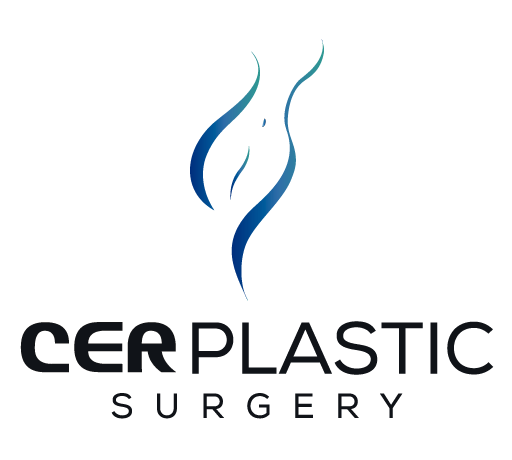Otoplasty, also known as ear surgery or ear reshaping, is a cosmetic procedure aimed at improving the appearance of the ears. If you have oversized or asymmetrical ears, otoplasty can help you achieve a more balanced and proportionate appearance.
Benefits of Otoplasty
Otoplasty offers numerous benefits to individuals who are unhappy with the appearance of their ears. The procedure can help:
- Correct protruding ears: Otoplasty creates a more natural and aesthetic contour in prominent ears.
- Resizes and reshapes ears: Otoplasty reduces the size of oversized ears and reshapes deformed or asymmetrical ears.
- Improves self-esteem: Improving the appearance of the ears increases confidence, especially in social and professional settings..
Procedure Details of Otoplasty
Otoplasty is typically performed under local anesthesia with sedation or general anesthesia, depending on the patient’s preference and the surgeon’s recommendation. The procedure generally follows these steps:
- Incision placement: The surgeon makes small incisions behind the ear or within the natural creases of the ear to minimize visible scarring.
- Cartilage reshaping: The surgeon carefully reshapes the underlying ear cartilage, sculpting it to achieve the desired look.
- Ear repositioning: If necessary, the surgeon repositions the ears closer to the head to create a more natural and balanced appearance.
- Suturing and dressing: The incisions are closed with sutures, and a dressing or bandage is applied to protect the surgical area.
Recovery Process of Otoplasty
After the otoplasty procedure, it is important to follow your surgeon’s post-operative instructions for a smooth recovery. Here are some general guidelines:
- Pain management: You may experience mild discomfort, swelling, and bruising, which can be managed with prescribed pain medication and cold compresses.
- Head positioning: To facilitate proper healing and reduce stress on the sutures, you may be advised to wear a headband or avoid sleeping on your side for a few weeks.
- Dressing care: Keep the dressing clean and dry as instructed by your surgeon. They may also provide specific guidelines for showering and hair washing.
- Physical activities: Avoid strenuous activities, contact sports, and activities that may put pressure on the ears for several weeks following surgery.
- Follow-up appointments: Attend all scheduled follow-up appointments with your surgeon to monitor your healing progress and address any concerns.
Risks and Considerations in Otoplasty
While otoplasty is generally considered safe, it is important to be aware of potential risks and complications. These may include:
- Infection: Although rare, infection can occur at the incision sites. Your surgeon will provide instructions to minimize this risk.
- Scarring: While efforts are made to minimize visible scarring, it is important to understand that scars are an inherent part of any surgical procedure.
- Asymmetry: Despite the surgeon’s best efforts, perfect symmetry cannot always be achieved, as each person’s ears are unique.
- Sensation changes: Temporary or permanent changes in sensation around the ears may occur but are typically rare.
- Unsatisfactory results: It is important to have realistic expectations and communicate your desired outcomes with your surgeon to ensure you are both on the same page.
Choosing a Qualified Surgeon
To achieve the best results and minimize risks, it is crucial to choose a board-certified plastic surgeon with experience in performing otoplasty. Research potential surgeons, review their qualifications, and ask to see before and after photos of previous patients.
In conclusion, otoplasty is a surgical procedure that can address various aesthetic concerns related to the appearance of the ears. By understanding the benefits, procedure details, recovery process, and potential risks, individuals considering otoplasty can make informed decisions. Consult with a qualified plastic surgeon to discuss your specific goals and determine if otoplasty is the right option for you.
- Infection: Although rare, infection can occur at the incision sites. Your surgeon will provide instructions to minimize this risk.
- Scarring: While efforts are made to minimize visible scarring, it is important to understand that scars are an inherent part of any surgical procedure.
- Asymmetry: Despite the surgeon’s best efforts, perfect symmetry cannot always be achieved, as each person’s ears are unique.
- Sensation changes: Temporary or permanent changes in sensation around the ears may occur but are typically rare.
- Unsatisfactory results: It is important to have realistic expectations and communicate your desired outcomes with your surgeon to ensure you are both on the same page.
To achieve the best results and minimize risks, it is crucial to choose a board-certified plastic surgeon with experience in performing otoplasty. Research potential surgeons, review their qualifications, and ask to see before and after photos of previous patients.
What you can expect
Before
Otoplasty can be done in a hospital or an outpatient surgical facility.
Sometimes the procedure is done with sedation and local anesthesia, which numbs only part of your body. In other cases, general anesthesia — which renders you unconscious — may be given before your procedure.
During
Otoplasty techniques vary based on what kind of correction is needed. The specific technique your plastic surgeon chooses will determine the location of the incisions and the resulting scars.
Your doctor might make incisions:
- On the backs of your ears
- Within the inner creases of your ears
After making incisions, your doctor might remove excess cartilage and skin. He or she will then fold the cartilage into the proper position and secure it with internal stitches. Additional stitches will be used to close the incisions.
The procedure typically takes about two hours.
After
After otoplasty, your ears will be covered in bandages for protection and support.
You’ll likely feel some discomfort and itching. Take pain medication as recommended by your doctor. If you take pain medication and your discomfort increases, contact your doctor immediately.
To keep pressure off your ears, avoid sleeping on your side. Also try not to rub or place excessive force on the incisions. Consider wearing button-down shirts or shirts with loosefitting collars.
A few days after otoplasty, your doctor will remove your bandages. Your ears will likely be swollen and red. You may need to wear a loose headband that covers your ears at night for a few weeks. This will help keep you from pulling your ears forward when rolling over in bed.
Talk to your doctor about when — or if — your stitches will be removed. Some stitches dissolve on their own. Others must be removed in the doctor’s office in the weeks after the procedure.
Ask your doctor when it’s OK to resume daily activities, such as bathing and physical activity.
In conclusion, otoplasty is a surgical procedure that can address various aesthetic concerns related to the appearance of the ears. By understanding the benefits, procedure details, recovery process, and potential risks, individuals considering otoplasty can make informed decisions. Consult with a qualified plastic surgeon to discuss your specific goals and determine if otoplasty is the right option for you.
START A VIRTUAL CONSULTATION
A virtual consultation is when you send us photos of the places of your body where you’d like to improve. Then our surgeon analyzes it to confirm that you are a candidate for that particular procedure. We later inform you about our doctor’s decision and give you a quote with all the information about your surgery. Please, do be at ease that everything is confidential between yourself, the doctor, and the doctor’s representative.




